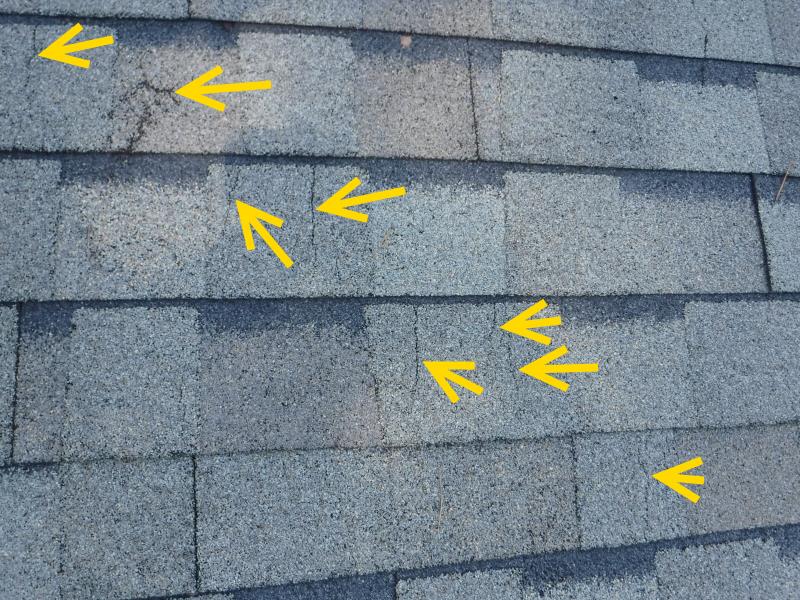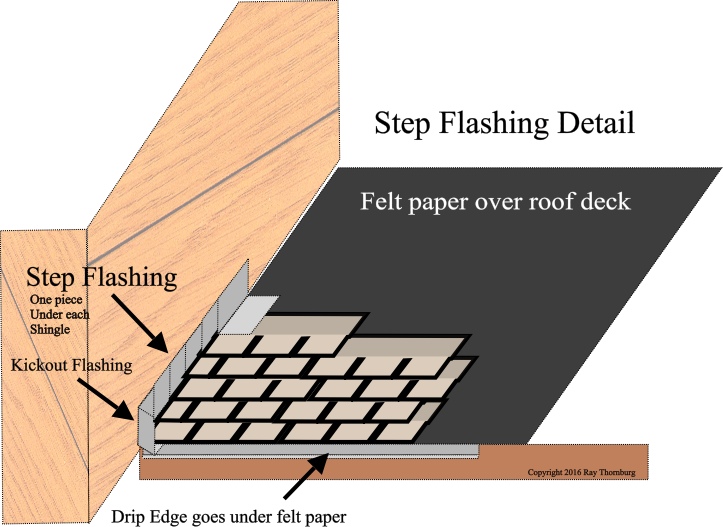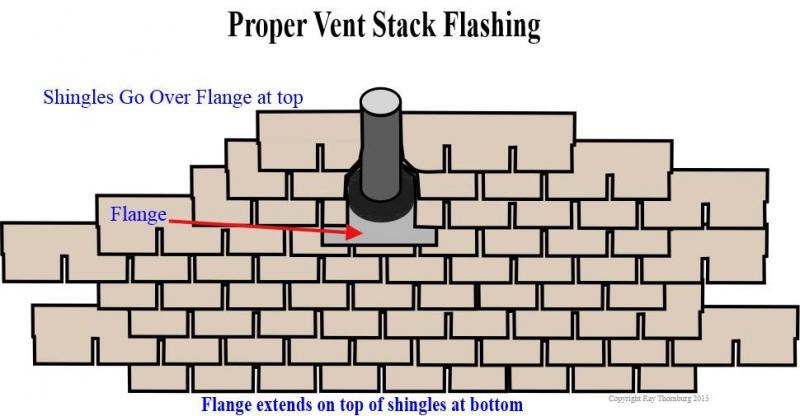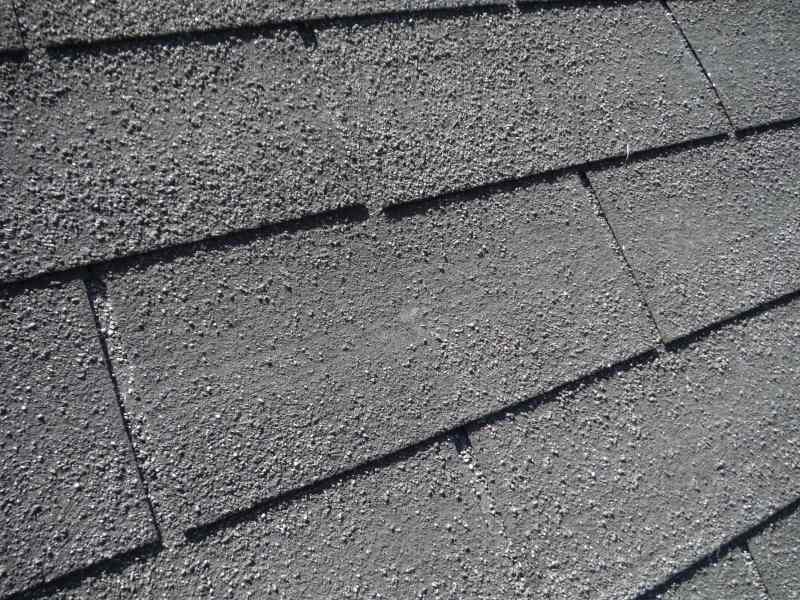- Home - Blue Palmetto Home Inspection of Summerville and Charleston
- Learn About Us and This Charleston Home Inspector
- What's Inspected
- Charleston Lowcountry Inspection Areas (geographic)
- Testimonials
- >>>Blogs (educational)
- Sample Reports & Documents
- Why Get a Home Inspection Report
- Charleston's Top Ten Reasons
- Home Inspector Photo Galleries
- Pricing
- Scheduling and Customer Information
- Home Inspection Authorization Contract
- General Scope of Work (electronic)
- Home Inspection Customer Satisfaction Survey
- Privacy Policy
- Full site
- The Roof Framers Field Manual
Charleston Home Inspector Discusses Roofing Defects
Submitted by Ray Thornburg on Sat, 10/29/2016 - 20:31
Charleston Home Inspector Discusses Shingle Roofing Defects

Roof coverings are a major expense so every home buyer wants to know how long the roof is going to last. It's a very important question and often one of the deciding factors in the decision to purchase. Almost all asphalt shingle roofs over ten years old has at least a few shingle defects whether it be broken tabs or a worn spots. So it is important to have it looked at when it is inspected. Believe it or not some home inspectors do not walk roofs. We here at Blue Palmetto will, if it is safe to do so. We'll also take some pretty pictures for you as documentation.
This article will not go into detail about installation procedures but instead concentrates on the type of defects we find during a home inspection. Installation instructions are printed on the package and will vary somewhat by manufacturer. However; we will touch on it a bit where necessary. Now on to our discussion.
Choosing the Right Type Shingle
- Three tab shingles are the most common and most are advertised to last about 20 years under average conditions. They are made in a single layer and have three distinct tabs. They are suitable for most areas except places where high winds are expected.
- Architect Shingles are a little thicker, heavier and are sometimes called laminated shingles. A little more expensive they advertise lasting from 25 to 30 years. They can be used in areas which are a little windier.
- The wind classification of asphalt shingles are stamped on the package according to table R905.2.4.1(1) per ASTM D7158 of the 2012 International Residential Code. You should choose a shingle that meets the basic maximum wind speed for the area where the building is located. Packages stamped G or H are good for 100, 110, 120 mph max wind zone. Packages stamped H are rated for the 130 - 150 mph zone.
- Another asphalt product which we'll discuss is not really a shingle at all; is roll roofing. Roll roofing is 36" wide and is rolled out like the asphalt underlayment is. Roll roofing has a life expectancy of about 10 years so it is generally only used for economy. It is also often used underneath valleys for instance. Exposed nails should be avoided when laying roll roofing as the lapped areas are designed to be glued with roofing cement.
- Shingles are approved for roofs pitched from 2/12 and greater. From 2/12 to 4/12 pitch a double layer of underlayment is required under it. Roll roofing is approved for 1/12 and greater pitch with a double layer of underlayment required for pitches less than 4/12.
- Drip edge is now required (2012- 2018) at the eaves and gables of shingle roofs. Drip edge should be installed under the felt paper at eaves and over the felt paper on gable ends. Sometimes shingles are laid flush with the drip edge but we recommend hanging it over about 1/2 inch (based on our observations). This is because during a slow rain the surface tension of the water will pull the water back and some of it will drip back on the fascia which may cause staining (if metal) or rot if made of wood. Reference 2012 IRC R905.2.8.5
- Drip edge now only required if manufacturer requires it. 2018 IRC now reads - A drip edge shall be provided at eaves and rake edges of asphalt shingle roofs where required by the manufacturer. Reference 905.2.8.5
- Manufacturers' directions take precedence.
Common Roofing Defects
Let's take a look at some of the more common roofing defects we find while doing home inspections in the Charleston lowcountry area.
This roof is so old the actual roof decking nails are starting to pop through. The extreme granule loss combined with the loss of weight is not enough to keep these dead nails from popping through. This is an example of an extremely old roof.
Another example of extreme granule loss. This entire roof needs to be replaced.
When shingles get old it is easier for wind to get under them and blow them off. This roof in Charleston has some missing shingles and some past repairs also. Time for a new roof.
A cracked vent stack boot is a common problem which occurs about halfway through a roof covering life cycle. A cracked boot can allow moisture intrusion so must be replaced. In this case the boot is close to a valley which is not recommended. Vent stacks should be relocated if closer than 2 feet to the valley. Spraying the boot with armor all will extend their life, if they are not already cracked.
Loose ridge vents are a common problem. They are often nailed down to the sheathing only and work their way loose. A better way would be screws with rubber washers but most roofers don't carry power screwdrivers. Missing end caps are also a common defect on this type of ridge vent as it can allow insects into the attic areas.
Here is a new home under construction showing the drip edge improperly placed over the felt paper. Though often done it actually should be placed under the felt paper at the bottom, over on the sides (gable ends). I think one of the reasons why this defect is so common is that it's the framers who felt the roof before the roofers get there with the drip edge. Nevertheless it should be underneath the felt paper at bottom
 Craze cracking is often characterized as a manufacturing defects. The craze cracks can radiate in any direction and often show up within a few years after installation. Craze cracking can reduce the life of the shingle roof dramatically. This roof was 5 years old at time of inspection.
Craze cracking is often characterized as a manufacturing defects. The craze cracks can radiate in any direction and often show up within a few years after installation. Craze cracking can reduce the life of the shingle roof dramatically. This roof was 5 years old at time of inspection.
A rubber boot contacting a water heater exhaust B vent is a defective installation. B vents require a 1" clearance to combustibles. This one is has a huge crack. Metal thimbles are required for exhaust vents.
We call this gutterwall flashing and it is a defective installation method; so is more likely to fail. In an effort to save time some "roofers" will run a single strip of flashing the full length of the gable wall above the felt paper and put a little bend in the flashing (yellow arrow) thinking that will divert the water. Manufacturers require step flashing which goes under the top shingle in each course, but above the lower shingle in each course. In this case some siding will have to be removed to properly step flash it. Any flashing method whether proper or improper becomes problematic when it fails (starts to leak). Improper methods stand a higher chance of leakage so it is wise to consider improvement even if no leakage is evident.
Occasionally the flashing is installed in a way which does not protect the sheathing. If there is no additional step flashing on the outside moisture could wick up the sheathing causing damage. Some moisture wicking is visible in this installation so it likely step flashing is missing. So this is another defective installation method.
 Picture at left shows the proper step flashing method for your reference. In Charleston many home have flashing which is not directly observable during a home inspection. It is always a good idea to leave at least an inch gap between the siding and the shingles. This prevents moisture wicking and allows for inspection, maintenance.
Picture at left shows the proper step flashing method for your reference. In Charleston many home have flashing which is not directly observable during a home inspection. It is always a good idea to leave at least an inch gap between the siding and the shingles. This prevents moisture wicking and allows for inspection, maintenance.
A lack of kickout flashing can cause moisture intrusion in some circumstances. Though usually the amount of moisture that penetrates is small; over time it can cause a lot of damage. An example of kickout flashing can be found here at our : What is kickout flashing page?
A nail pop under the shingle will make a small hump in the shingle. This is very common and can be sealed with sealant in most cases if it is not located in a critical area. Trying to drive the nail back down doesn't work as the nail will eventually start backing out again.
Leaking around vent stacks and other penetrations are most common. A leak will cause a dark stain as pictured but sometimes it is hard to tell if a leak is current. This is because the hot attic quickly evaporates moisture making it hard to test with a moisture meter or feel with your hands. Vent stack boots can leak for a variety of reasons and sometimes it's not possible to tell if they are leaking until observed from the attic side as was the case here. So they should be installed carefully.
 A vent stack can be installed without sealant typically. When sealant is applied it is often the wrong kind so it's not really effective. Vent stack boots can leak for a variety of reasons. Occasionally the shingles are not lapped correctly at the sides and bottom. The picture at left shows the proper way.
A vent stack can be installed without sealant typically. When sealant is applied it is often the wrong kind so it's not really effective. Vent stack boots can leak for a variety of reasons. Occasionally the shingles are not lapped correctly at the sides and bottom. The picture at left shows the proper way.
A small hole or crack in the gable end shingle is not uncommon. Sometimes the sharp edge of wood or metal fascia pokes through at that spot causing a place where moisture can penetrate. The picture shows a sad attempt to correct it with caulk. Laying a shingle over the cracked on in this instance is an easy enough way to repair this.
The siding pictured is suffering from moisture wicking. Best practice is to allow at least an inch between the roof and the siding.
The condition at left is where the fascia does not plane out with the roof. It can cause a dip where the water can run sideways (instead of down and over) where it could find a joint between the shingles causing moisture intrusion. The easiest solution is simply to lay a few shingles down on top of the roof in that spot to build it up slightly before the shingles are laid. This requires some forethought by the roofer though. In this case there was no forethought so some leak areas were found on this roof.
*************
Another common defect we find is the use of an incompatible roofing cement. The pictures at left shows a nail pop and a dryer vent sealed with an unsuitable sealant. Click the image to enlarge into a new window. As can be seen it is already lifting up thus causing an even bigger hole than before.
As can be seen here this sealant has pulled loose from both the plastic roof vent and the shingles. On shingles the best products to use are tar based and are listed and labeled for use in sealing asphalt shingles. The good news is that these type of sealants are often the most inexpensive.
At left shows what can happen over time if the shingles are laid flush with the drip edge as they are in the picture at left. The surface tension of the water could allow the water to drip back and stain the fascia or rot it out if it was made of wood. We recommend hanging the shingle over about a half inch to advoid this as a best practice.
Instead of drip edge I've noticed some builders are choosing to use a metal fascial bent back under the shingle a bit like in the example at left. (Looks like they forgot to use felt paper too.) Although there may be some benefits to doing it like this; it does not technically meet the requirements for drip edge. This is because drip edge is required to extend up the roof a minimum of 2 inches, be fastened to the roof deck a maximum of 12" O.C. and the felt paper shall be installed over the drip at bottom edge of roof (drip edge over felt on the rakes). Doing it like this offers no protection from ice dams and limited protection of splashback from gutters for instance. Drip edge has been required since the adaptation of the 2012 IRC. Note* This changed in 2018 to read "where required by the manufacturer".
There is really no end to the roofing defects that could be posted here as examples of what we find during a home inspection. Often a leak develops and the source is not immediately apparent. A small hole, misapplication or a nail pop in the wrong area can facilitate a leak. If you're buying a home in the Charleston area, you'll want an inspector that will get up there on the roof and take gander. We hope you choose Blue Palmetto Home Inspection.
This page is under construction. Stay Tuned.


